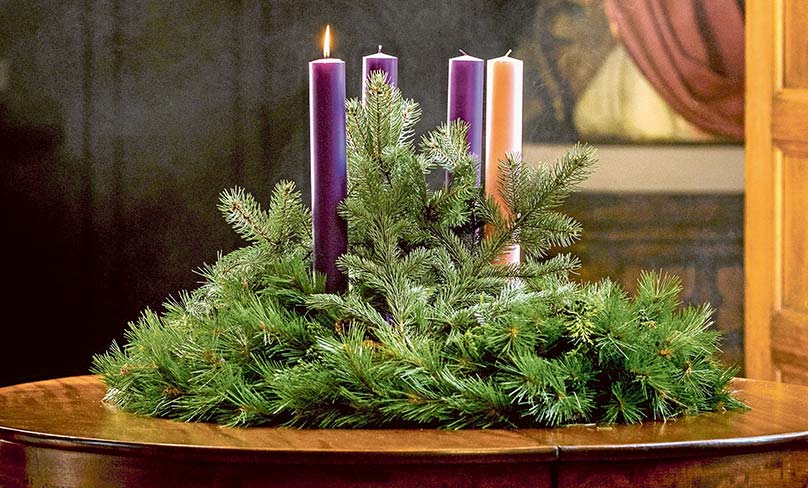
“Dear Father, our priest recently encouraged us to do special penances in Advent. I had never thought of Advent as a season of penance. Is this a proper way to live the season?”
While the documents of the Church at present speak more of hope and expectation at the two comings of Christ – in Bethlehem two thousand years ago and at the end of time – historically Advent has always been a season of penance. The Church has traditionally prepared for all the great feasts by seasons and days of penance, so that Easter, for example, is preceded by 40 days of penance in Lent. Advent too, historically, was a season of special penance to prepare for the birth of our Saviour, and it still is today, seen in the purple colour of the vestments.
Fr Francis Weiser S.J., in his Handbook of Christian Feasts and Customs (Harcourt, Brace 1954) describes the history of Advent in great detail and what follows is taken largely from that book.
As preparation for Christmas, the season of Advent began to be observed when the feast of Christmas came to be celebrated, in the fourth century in Rome and in the fifth in Gaul and Spain. From the beginning, penance was part of this preparation. Bishop Perpetuus of Tours (490) issued a regulation that there should be three days of fasting each week from the feast of St Martin of Tours (November 11) to Christmas. At that time the name Advent was not yet in use and the season was called Quadragesima Sancti Martini, the Forty Days of St Martin.
The practice of living a season of penance before Christmas soon spread throughout France, Spain and later Germany. The fast started on different days, among them 24 September, 1, 11 or 14 November, and 1 December. It is interesting that for Mass on the weekdays of Advent the Church in Gaul used the texts for the Masses of Lent.
In Rome the celebration of Advent began in the sixth century without the penitential aspect. It was a festive and joyful time of preparation for Christmas and it began four or five Sundays before Christmas. In the eighth century the Church in France adopted the Roman liturgy with its shorter, non-penitential celebration of Advent. However, after a few centuries there emerged in both Rome and France a final structure of Advent which combined the shorter four weeks’ duration of Rome with the fasting and penitential aspect of France. Since the thirteenth century this structure has remained practically unchanged.
The law of fast was never as strict as that of Lent and it varied considerably from place to place, both in content and in duration. In most places people were to fast three days a week and to abstain from certain foods. As regards the latter, Bishop Burchard of Worms in 1025 ordered abstinence from wine, ale, honey-beer, meat, fat, cheese and fat fish. In addition, people were to abstain from weddings, amusements, travel for pleasure and even, on days of fasting, from conjugal relations.
In later centuries papal indults gradually reduced the obligation of fasting to two days a week. These days were, for example, Friday and Saturday in Italy and Wednesday and Friday in Austria. The Code of Canon Law of 1917 did away with the requirement of fasting, except for the fast of Ember week and of the Christmas vigil.
The Orthodox Churches do not have a liturgical preparation for Christmas but ever since the eighth century they do observe a fast. It extends from 14 November to Christmas and is known as St Philip’s Fast, since it begins on the day after the feast of St Philip, 14 November in their calendar. Different Eastern Churches have different lengths of this fast and many of them celebrate the birth of Christ on the feast of Epiphany.
Fr Weiser sums up the spirit of Advent: “By a spirit of humble penance and contrition we should prepare ourselves for a worthy and fruitful celebration of the feast of the Nativity. This penance is not as harsh as that of Lent – there is no prescribed fast – and the joyful note of the season helps people to perform penitential exercises in a mood of happy spiritual toil, to ‘make ready the way of the Lord’” (Mt 3, 3; pp. 53-54). In short, it is up to each one to decide what to do but, as always in the matter of penance, the more the better.
